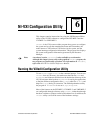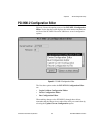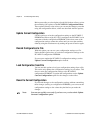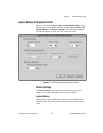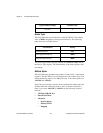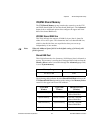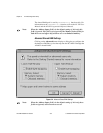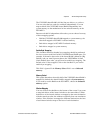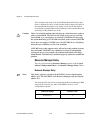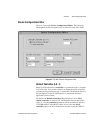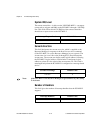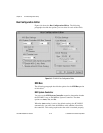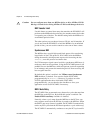
Chapter 6 NI-VXI Configuration Utility
©
National Instruments Corporation 6-9 VXI/VME-PCI8022 for Solaris
The VXI/VME shared RAM is divided into two halves, or windows.
You can select the byte order for each half independently. You can
map each half of the VXI/VME shared RAM independently into
system memory on the motherboard or into onboard memory on the
PCI-MXI-2.
Because each half is independent of the other, you can choose from any
of these mapping options:
• Half the VXI/VME shared RAM mapped to system memory; the
other half mapped to PCI-MXI-2 onboard memory
• Both halves mapped to PCI-MXI-2 onboard memory
• Both halves mapped to system memory
Enable Byte Swapping
This checkbox indicates whether byte swapping should be performed
for slave accesses to this half of the VXI/VME shared RAM space. For
example, if the native byte order of the shared RAM is Motorola (Big
Endian), and you want to present data to the VXI/VMEbus in Intel
(Little Endian) byte order, you will need to enable byte swapping. The
default value is non-swapped. Click on the checkbox if you want to
enable byte swapping.
This field is ignored if the Memory Select field is set to Onboard
memory.
Memory Select
This option determines where this half of the VXI/VME shared RAM is
mapped. By default, the shared RAM is mapped to System memory.
If you want to use the RAM on the PCI-MXI-2, choose the Onboard
memory option.
Window Mapping
You can click on the checkbox at the bottom of the screen if you want
to map both halves of the inward window to the same address. When
both halves of the inward window are mapped to the same destination
with the same byte order, the windows essentially form one continuous
window. If the windows are mapped to different destinations, the base
of each inward window maps to the base of each destination.



